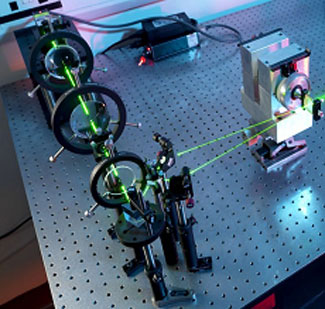| May 27, 2011 |
Optical techniques for measuring the content and distribution of nanoparticles in materials
|
|
(Nanowerk News) Even tiny concentrations of nanoparticles can have a very large effect on the properties of a material. Carbon nanotubes, for example, can increase electrical conductivity by up to a million times when present at only 0.5wt% (percent by weight). However, these nanoparticles need to be evenly spaced throughout a material to accomplish such changes, and it is therefore important to accurately measure both particle content and particle distribution.
|
|
The National Physical Laboratory (NPL) in the UK is developing three optical techniques that use light scattering to make these measurements in solid polymers: frequency-domain optical coherence tomography (FD-OCT), Fraunhofer wavefront correlation (FWC) and oscillatory photon correlation spectroscopy (Os-PCS). NPL's Bill Broughton and Triantafillos Koukoulas authored an article that appeared in the May 2011 edition of Materials World describing this work.
|
 |
| NPL's dual-beam photon correlation spectroscopy system.
|
|
These new techniques could help industry develop and monitor products that use nanoparticle-containing materials, known as nanocomposites. Although each technique is different, they all use the variation in refractive index between nanoparticles and the polymer material they are embedded in, which leads to a difference in the scattering of light. The ability to detect this light-scattering means that the content and distribution of nanoparticles can be measured. The aim is also to expand these methods to use infrared light so that they can analyse samples of varying transparencies.
|
|
The development of these techniques will better enable industry to realise the potential of nanocomposites by providing a versatile and reliable way to measure the different types of nanoparticles that give them their extraordinary properties.
|

